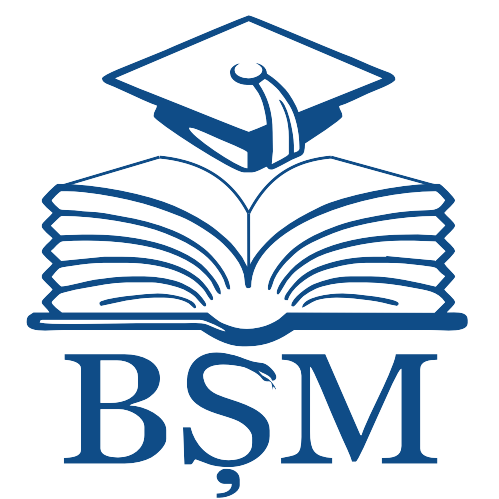|
|
- IRMS - Nicolae Testemitanu SUMPh
- 1. COLECȚIA INSTITUȚIONALĂ
- Revista de Științe ale Sănătății din Moldova
- Revista de Științe ale Sănătății din Moldova : Moldovan Journal of Health Sciences 2024 Vol. 11, Issue 2
Please use this identifier to cite or link to this item:
http://hdl.handle.net/20.500.12710/29843
| Title: | Modificările degenerative condiliene în plan sagital la pacienți cu dereglări temporomandibulare |
| Other Titles: | Condylar degenerative changes in the sagittal plane in patients with temporomandibular disorders |
| Authors: | Nistor, Lilian
Tighineanu, Marcela
Gospodaru, Ștefan
Ojovan, Ala
Fala, Valeriu |
| Keywords: | temporomandibular disorders;computed tomogra phy with cone beam;degenerative changes;laterality |
| Issue Date: | 2024 |
| Publisher: | Instituţia Publică Universitatea de Stat de Medicină şi Farmacie „Nicolae Testemiţanu” din Republica Moldova |
| Citation: | NISTOR, Lilian; TIGHINEANU, Marcela; GOSPODARU, Ștefan; OJOVAN, Ala; FALA, Valeriu. Modificările degenerative condiliene în plan sagital la pacienți cu dereglări temporomandibulare = Condylar degenerative changes in the sagittal plane in patients with temporomandibular disorders. In: Revista de Ştiinţe ale Sănătăţii din Moldova = Moldovan Journal of Health Sciences. 2024, vol. 11(3), an. 2, p. 844. ISSN 2345-1467. |
| Abstract: | Introducere. Dereglările temporomandibulare (DTM) sunt
însoțite de variate variante morfologice și modificări degenerative la nivelul condilului mandibular, însă nu este pe
deplin elucidată influența partea dominantă a corpului și
severitatea DTM. Scopul lucrării. Determinarea frecvenței
diferitor modificări osoase la nivel de condil mandibular în
plan sagital la pacienți cu DTM, în funcție de lateralitatea
investigării. Material și metode. Au fost examinate 160
de ATM-uri la pacienți dreptaci cu diagnostic de dereglări
temporomandibulare, în baza CBCT (computer tomografie cu fascicol conic). Pe secțiuni calibrate, au fost evaluată
prezența modificărilor la nivel de condil în plan sagital (clasificarea Koyama-Gorurgoz) cu compararea statistică (test
chi-pătrat, comparații în perechi Wald) în funcție de lateralitatea investigării. Rezultate. Nu s-au observat diferențe
semnificative în funcție de lateralitate (p > 0.05), cea mai
înaltă frecvență fiind observată pentru aplatizări condiliene (62.5% - ATM dreapta, 55.0% - ATM stânga), celelalte
tipuri de modificări degenerative (osteofit, scleroză, chist
subcondral, eroziune) au avut o frecvență relativ redusă
(6.25-16.25% cazuri). După numărul de modificări degenerative, erau mai frecvent întâlnite cazuri cu modificări
solitare (42.5/38.75%), sau în asociere de 2 modificări
(16.25/20%), însă fără diferențe statistic semnificative.
Concluzii. Rezultatele arată că în ciuda unor ușoare tendințe de identificare mai frecvent a modificărilor degenerative pe partea dominantă față de cea controlaterală, acestea
nu ating semnificația statistică (p > 0.05), astfel nu s-a confirmat influență criteriului de lateralitate.
Background. Temporomandibular disorders (TMD) are accompanied by various morphological variants and degenerative changes at the level of the mandibular condyle, but the
influence of the dominant part of the body on the severity
of TMD are not fully elucidated. Objective of the study. To
determine the frequency of different bone changes at the
level of the mandibular condyle in the sagittal plane in patients with TMD, depending on the laterality of the investigation. Material and methods. 160 TMJs were examined in
right-handed patients diagnosed with temporomandibular
disorders, based on CBCT (cone beam computed tomography). On calibrated sections, the presence of changes at
the level of the condyle in the sagittal plane was evaluated
(Koyama-Gorurgoz classification) with statistical comparison (chi-square test, Wald pairwise comparisons) depending on the laterality of the investigation. Results. No significant differences were observed according to laterality
(p > 0.05), the highest frequency being observed for condylar flattening (62.5% - right TMJ, 55.0% - left TMJ), the
other types of degenerative changes (osteophyte, sclerosis,
subchondral cyst, erosion) had a relatively low frequency
(6.25-16.25% cases). According to the number of degenerative changes, there were more frequent cases with solitary changes (42.5/38.75%), or in association of 2 changes
(16.25/20%), but without statistically significant differences. Conclusion. The results show that despite slight tendencies of a more frequent identification of degenerative changes on the dominant side compared to the contralateral side,
they do not reach statistical significance (p > 0.05), thus the
impact of the laterality criterion was not confirmed. |
| metadata.dc.relation.ispartof: | Revista de Științe ale Sănătății din Moldova = Moldovan Journal of Health Sciences |
| URI: | https://cercetare.usmf.md/sites/default/files/inline-files/MJHS_11_3_2024_anexa2__site.pdf
https://repository.usmf.md/handle/20.500.12710/29843 |
| ISSN: | 2345-1467 |
| Appears in Collections: | Revista de Științe ale Sănătății din Moldova : Moldovan Journal of Health Sciences 2024 Vol. 11, Issue 2
|
Items in DSpace are protected by copyright, with all rights reserved, unless otherwise indicated.
|


